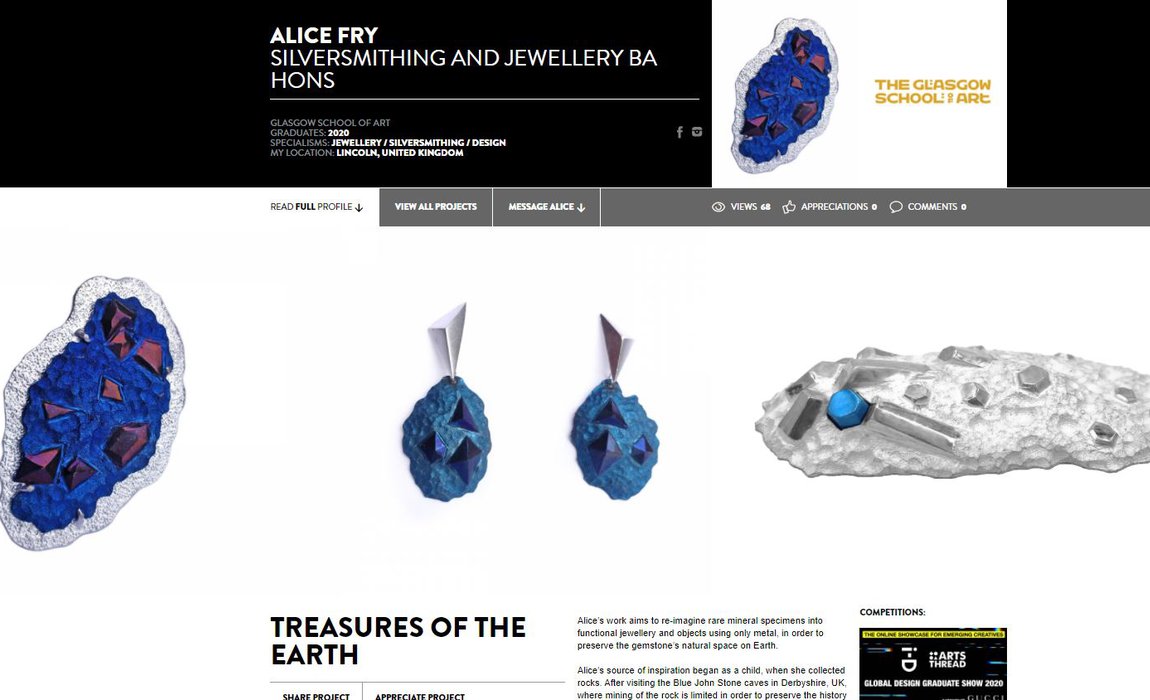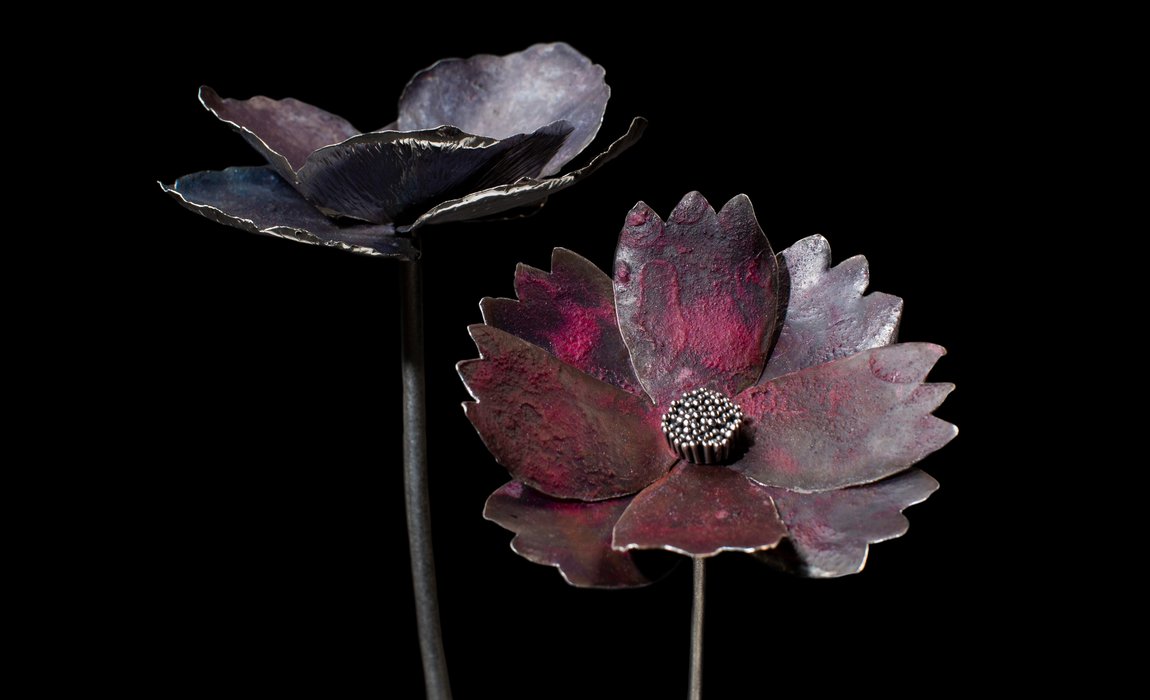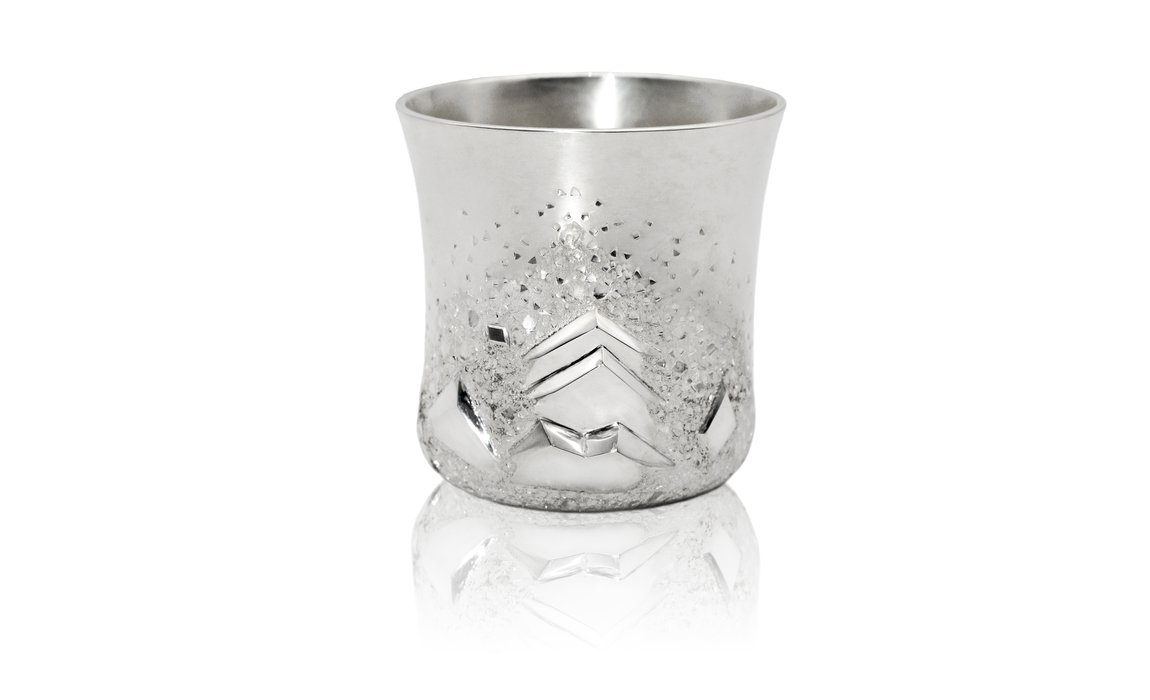It Starts Here: How to make your jewellery or silversmithing portfolio stand out
As a new graduate or trainee, you need to show and tell others what you are about. Whether you want to attract new customers, land that dream job or are looking to be selected for residencies or selling showcases, understanding how to best shine the light on yourself and your work through your portfolio is key to your success. Katie Dominy, Co-Founder of Artsthread, the digital launchpad for emerging artists and designers, shares her advice on how to make your jewellery or silversmithing portfolio stand out.
#1 Figure out what you want to achieve
A good, creative portfolio is one that works for you and reflects what you want others to see.
Your portfolio isn’t going to be the same as anyone else’s – we all have our own priorities! So, believe in your own identity.
There is nothing wrong in writing down what you want to achieve. Ask yourself:
- Why am I doing this and for whom?
- Who am I and what is my work about?
- What is it that I want to project forward to others?
- Am I putting this portfolio together to get a job? Am I looking for freelance work? Or do I want people to buy my work online?
- How do I make my portfolio stand out from others?
This doesn’t mean you can’t present yourself in many different ways – remember, as a jeweller or silversmith, you can be both a freelancer as well as have your own brand.
#2 Show your best work first
Whether you are presenting your portfolio digitally or on paper, you want to show your best work first. Don’t keep it hidden on page twenty of your portfolio!
Think about how you look at work online. If you’re looking for a recipe or searching for a holiday destination, you will look at two or three pictures and then decide immediately whether you want to look at anymore. You need to think about your portfolio in the same way - entice people in by presenting your work in the best possible light.
However, you, may also want to show how you’re developing as a craftsperson. By presenting your work or collections thematically or in chronological order, you can highlight the difference in your work and how it has progressed.
 Jeweller and silversmith Alice Fry presents her digital portfolio on Artsthread
Jeweller and silversmith Alice Fry presents her digital portfolio on Artsthread
#3 Get others to look at your portfolio
It’s important to get the opinion of others. Use people that you trust to provide fresh feedback on your presentation.
Ask colleagues, course participants or mentors whether they would understand what you do when they have a look at your portfolio, social media or website.
Sometimes we are too close to our own work and get tied up in the details. Without asking the opinion of others, you could forget something quite important.
#4 Think about the format
Today, it is essential to develop both an online and digital presence. Others are likely to view what you do online first, before making the effort to come and see your work in person.
Your digital presence doesn’t have to be massive or expensive - you don’t need an all-dancing website or every social media channel! Artsthread portfolios are completely free, and so is an Instagram account.
You do need to understand how your work translates from paper to screen. If you scan your prints and put them online, all the white space around your work, which looks great when you see it in person, might not look good online. Think about how you frame your work, edit or crop it, and how colours can appear vibrant on paper, but washed out on screen.
#5 Tell a story through your work
The story behind your work is as important as the finished jewellery or silversmithing pieces you create. It’s the reason why people buy into you.
There are many ways you can tell your story. You can share still imagery; or create short films to show you working on a piece. But, don’t let in-progress content interfere with showing off your finished work. Your best work should always come first!
If you are telling a story, consider how you put your content online in an engaging and professional way. Whether you’re using social media, a website or third-party platform, like Artsthread, you could add some graphics to your designs, add a voice over, annotate your content with words or emojis.
 Jeweller and silversmith Danniella Wilde presents her latest collection on Artsthread
Jeweller and silversmith Danniella Wilde presents her latest collection on Artsthread
#6 Keep it simple and concise
When telling your story or presenting yourself, write very simply. You can always add more later.
Explain who you are, what your influences and interests are, which materials you use and what you are trying to achieve. This descriptive text will be needed again and again for different opportunities – so it’s good to prepare one paragraph, two paragraphs and a longer piece.
Each time you submit your text, respond to who is reading about you. If it’s a residency, emphasise that you are self-motivated and good at working by yourself, and like to collaborate with others. As a freelancer, it might be more important to show you’re an expert in a specific skill or technique. You can do this through photographs or video as people are much more visually led.
#7 Be proud of your mistakes
Don’t be afraid to show what didn’t work in your practice. It’s not always about the success or your final piece.
If you craft something new or are responding to a brief, it’s good to share the important steps in your process. You can demonstrate how you innovated and changed your approach and technique to make your piece work.
In your portfolio, you should start by showing the finished piece. Then tell the story about how this piece came about – sharing both successes and failed attempts – through relevant images or text. Make sure you include a paragraph about the design brief and how you responded to it.
 Patinated Silver Anemone and Cosmos by Danniella Wilde, 2019 © Photographer George Archer
Patinated Silver Anemone and Cosmos by Danniella Wilde, 2019 © Photographer George Archer
 Crystal Tumbler by Alice Fry, 2021 (c) Alice Fry
Crystal Tumbler by Alice Fry, 2021 (c) Alice Fry
#8 Good photography is key
Good photography is key! As jewellery and silversmithing work can be hard to photograph, you can either learn how to do it yourself, get a professional photographer, or combine with others to share the costs in a joint session.
Photographs often don’t present pieces to their best effect, which can stop others from selecting your work or promoting it ahead of a show. Keep this in mind and try out alternative ways of presenting your work at its best.